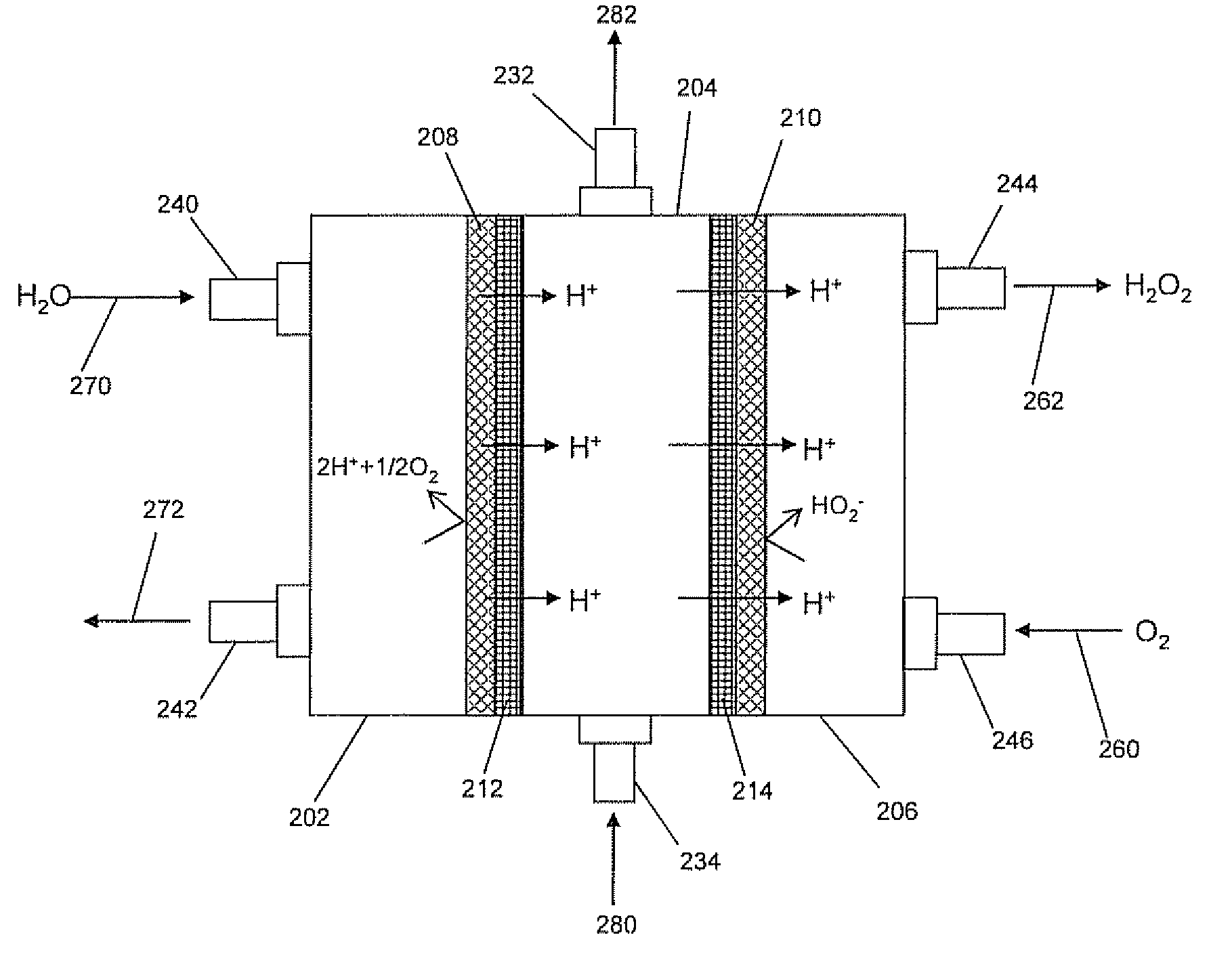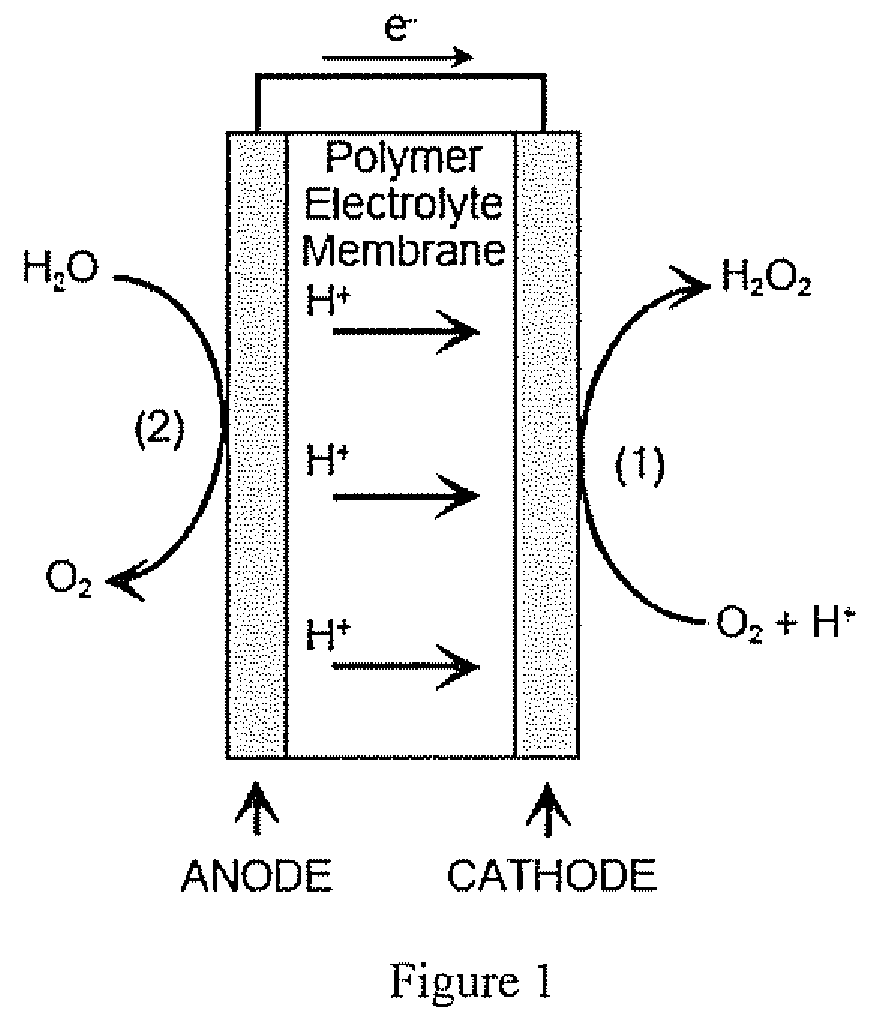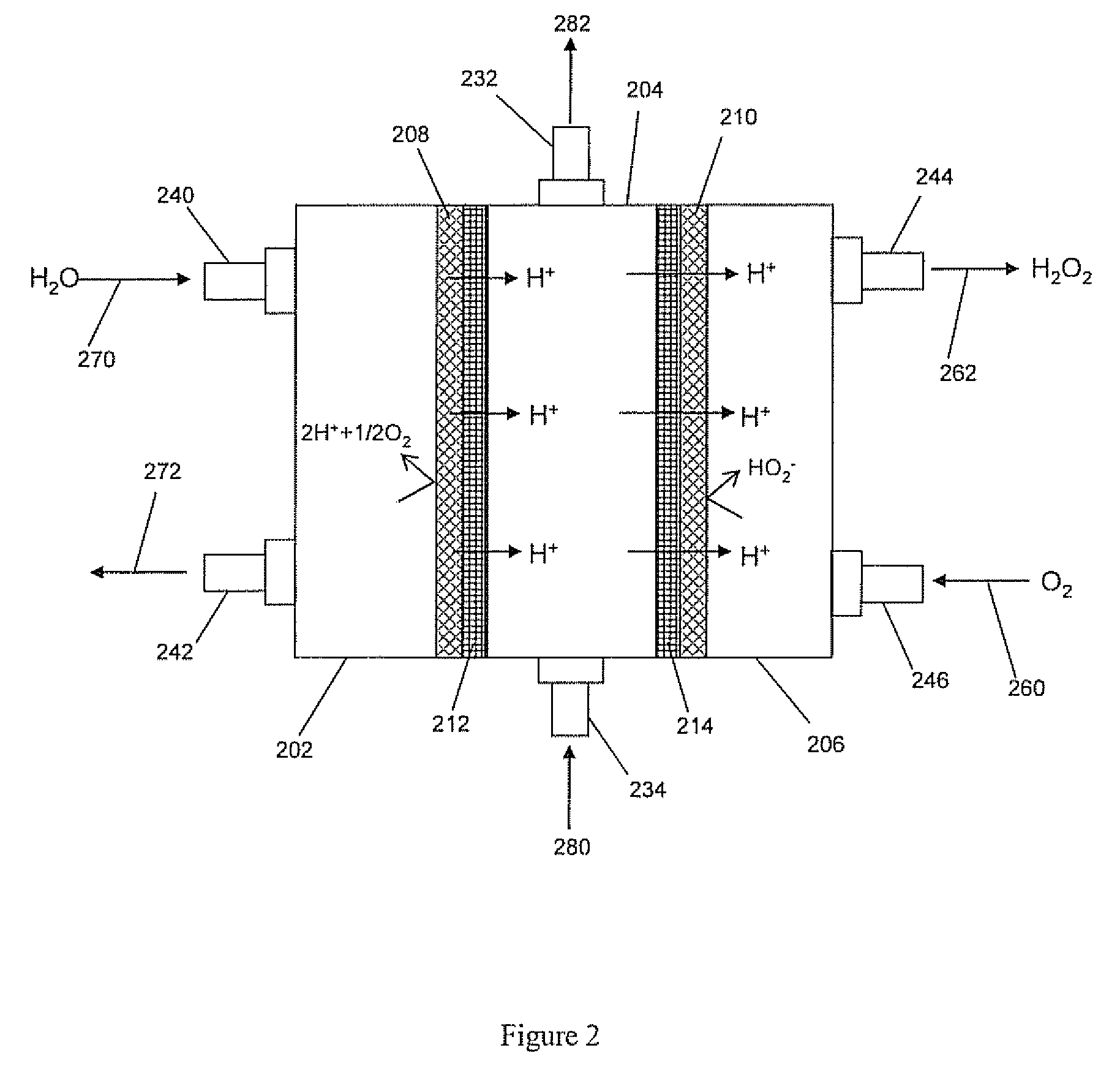Methods and Apparatus for the On-Site Production of Hydrogen Peroxide
a hydrogen peroxide and onsite technology, applied in the direction of electrolysis components, chemistry apparatus and processes, treatment water, etc., can solve the problems of not being widely used for industrial sterilization, cost and safety of traditional (chemical) hydrogen peroxide sources, and not allowing pure hydrogen peroxide to be generated directly in liquid streams, etc., to achieve low cost hydrogen peroxide production, tighten waste disposal emission constraints, and reduce health, safety and environmental risks
- Summary
- Abstract
- Description
- Claims
- Application Information
AI Technical Summary
Benefits of technology
Problems solved by technology
Method used
Image
Examples
example 1
Micro-Flow Electrolytic Cell Design
[0082] In this example, the micro-flow cell was designed to have a geometric electrode area of 47 cm2. It was used to prove hydrogen peroxide production is effective in the three-chamber configuration (in contrast to two-chambers) and to determine effects of electrolyte concentrations on performance. The overall dimensions of the cell when assembled were 5.25″×6.5″×2.625″. Quick disconnect fittings were used on the catholyte (0.75″ NPT) and anolyte (0.5″ NPT) inlets and outlets. The central chamber used 0.375″ compression fittings adapted down to a #10-32 thread due to the narrow width of the central chamber flow frame.
Cathode Preparation (Micro-flow Cell)
[0083] The cathode was constructed of commercially available carbon cloth (De-Comp Composites 3k plain weave carbon cloth, FG-3k) that was mounted in a polycarbonate frame. This frame was face sealed with Viton gaskets in the cell.
[0084] The carbon cloth cathode was made by sandwiching the ca...
example 2
3 Chamber Electrolytic Cell Performance Optimization
[0136] The performance of the three chamber micro-flow electrolytic cell was evaluated. The primary goal was to identify and to optimize the most influential parameters on production. This task was performed in three stages. The first was establishing base-line cell performance and experimental techniques with the three chamber micro-flow cell. The second stage was testing the effects of different experimental parameters using the three chamber micro-flow cell. The third stage was testing the most favorable conditions to achieve the application requirements of this program with the 2x cell. Results for each of these stages are presented below after describing the experimental setup.
1. Experimental Setup and Procedures
[0137] Each chamber of the cell was plumbed into a reservoir and the reservoir contents circulated through the cell by either a high flow March pump (model TE-5C-MD) with polypropylene pump head (Centennial Equipme...
example 3
Dairy Filter Cleaning Evaluation
[0167] The objective of this task was to evaluate the viability of cleaning filtration membranes used for dairy processing with cleansing solutions produced by the electrolytic cell. Cleaning performance of the electrolytic cell-produced cleansers is compared to the performance of a commercial cleanser product line designed for this application. Simulated cleanser solutions (that mimic potential electrolytic cell product solutions) are also evaluated for comparison. The primary challenge in this task was to determine cleanser solutions that the electrolytic technology can produce that perform equally as well as the commercial cleansers.
1. Experimental Setup
[0168] The primary component of the filtration apparatus used for evaluating membrane fouling and cleansing behavior was a miniature filtration membrane cell produced by Osmonics, Inc. (Sepa CF Membrane Cell) for testing and filtering with small RO / NF / UF membranes in a cross-flow configuration s...
PUM
| Property | Measurement | Unit |
|---|---|---|
| Molar concentration | aaaaa | aaaaa |
| pH | aaaaa | aaaaa |
| pH | aaaaa | aaaaa |
Abstract
Description
Claims
Application Information
 Login to View More
Login to View More - R&D
- Intellectual Property
- Life Sciences
- Materials
- Tech Scout
- Unparalleled Data Quality
- Higher Quality Content
- 60% Fewer Hallucinations
Browse by: Latest US Patents, China's latest patents, Technical Efficacy Thesaurus, Application Domain, Technology Topic, Popular Technical Reports.
© 2025 PatSnap. All rights reserved.Legal|Privacy policy|Modern Slavery Act Transparency Statement|Sitemap|About US| Contact US: help@patsnap.com



